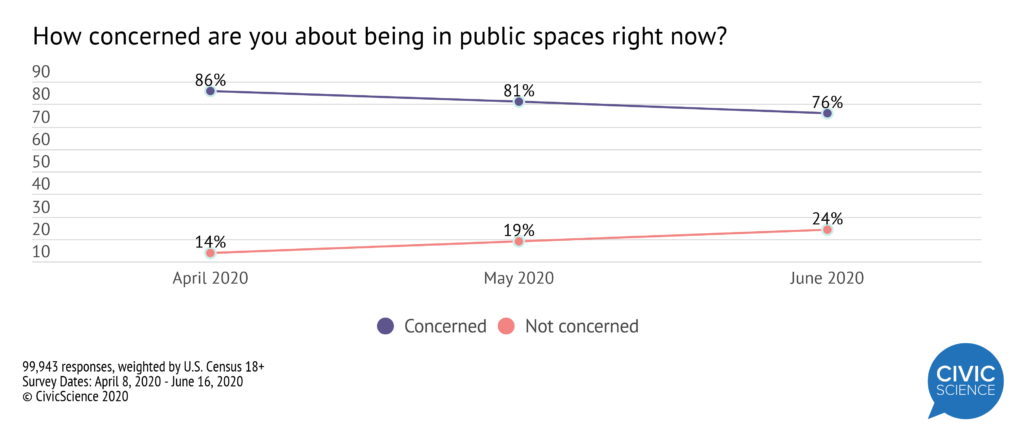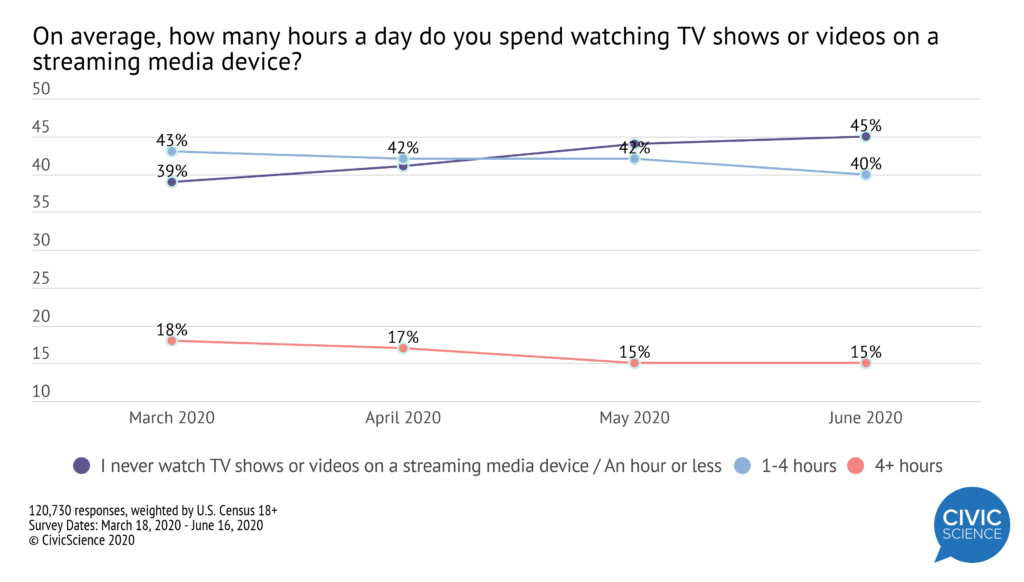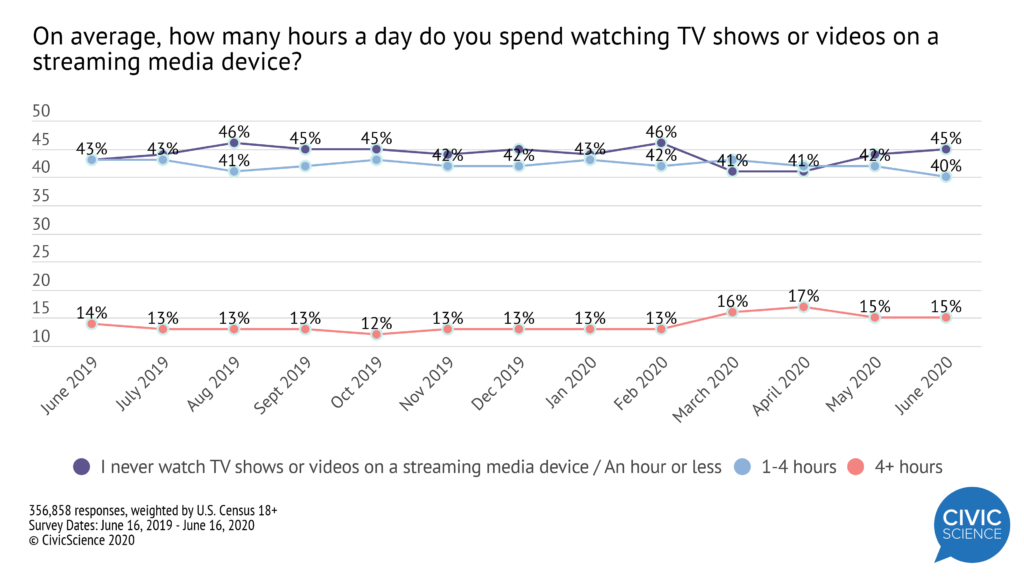In April, CivicScience discovered a turn toward TV and videos among U.S. adults. Sixty-three percent reported streaming video content to stay uplifted during a time of major crisis and uncertainty, especially since they were mostly homebound.
Even though the coronavirus crisis is still prevalent, nationwide reopenings and safety plans in place have likely given consumers confidence. While concern over being in public spaces is still at a high nearing 80% of U.S. adults, that concern has certainly been dwindling since April.
A change in habits picked up during lockdowns (like an increase in watching TV) indicates a shift in consumer activities. Hours a day spent streaming TV shows or videos was fairly consistent over the last year until March when those who were watching 4 or more hours a day spiked to 18% in March. For about a month, more people were streaming TV than not streaming TV. The spike in heavy streaming coincided with a low of 39% for people who ‘never’ streamed TV and videos or did so for an hour or less a day.
Since the beginning of June, numbers have normalized: 45% of U.S. adults say they never watch streamed TV and videos (or do so for less than an hour a day), and only 15% say they stream for more than 4.
Given the phased reopenings of cities and localities, it’s no surprise that some folks have turned off the TV in exchange for other activities. CivicScience will continue to monitor consumer confidence and how it is affecting their daily lives.










